‘Refuel’ is an intervention of the Self- Sufficent Buildings Studio that deals with waste. Architecturally and functionally it is a structure that collects, segregates and treats waste or discarded materials to derive new products . However, at the core, Refuel is not about recycling, but it is an attempt to provoke introspection of our urban consumerist lifestyles in this anthropocene era and to educate people about the ill-effects of this lifestyle but also the possibilities of creating a second life for this discarded matter in the most eco-efficient manner.
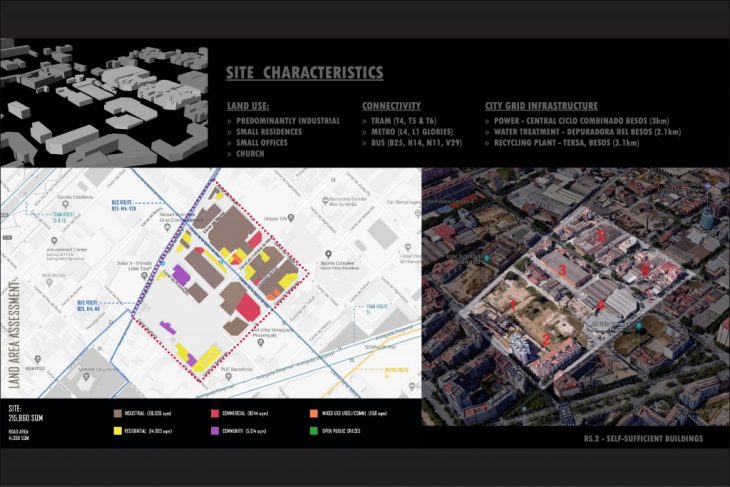
The Site – 6 Blocks in Poble Nou, Barcelona
Identifying a Problem: Large Volumes of waste generated daily that ends up in landfills and incinerators. This means valuable resources that could be reused are being lost and the process is also contaminating the soil and atmosphere.
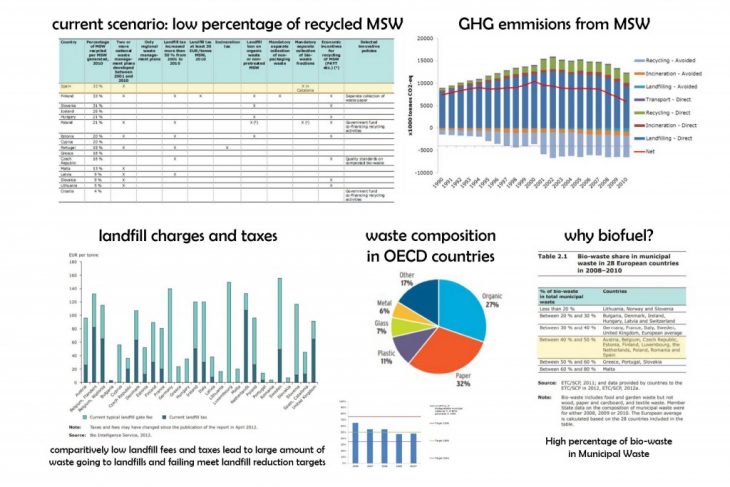
Statistics on waste generation and disposal
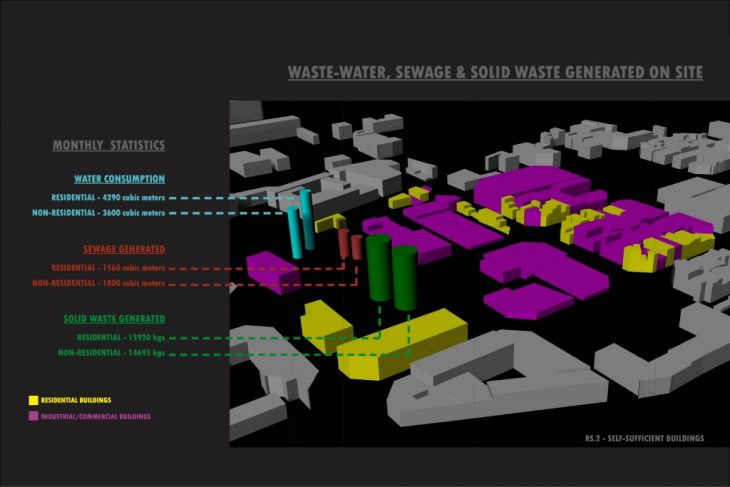
Wastes Generated on Site

Waste Generated per day and the Broad Categories of Wastes
Personal Agenda:
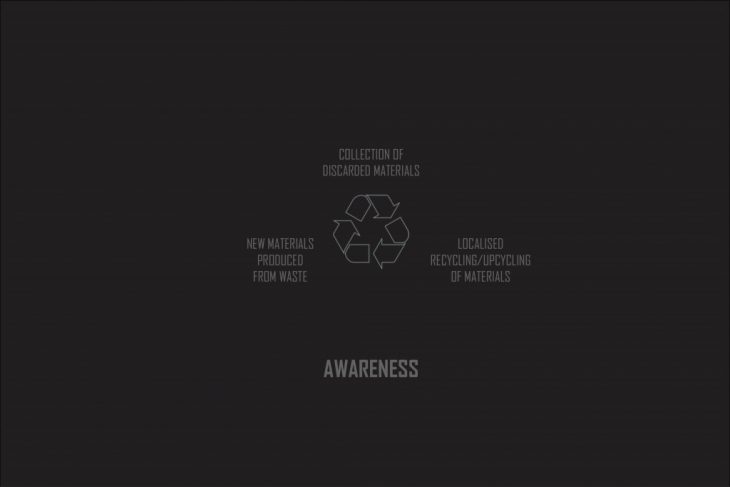
- Collection and smart segregation of waste matter so that materials can be recycled or upcycled rather than collectively ending up in landfills
- Creating awareness through transparency, forcing people to look at the ill-effects of their daily life on the environment.
The First Prototype:
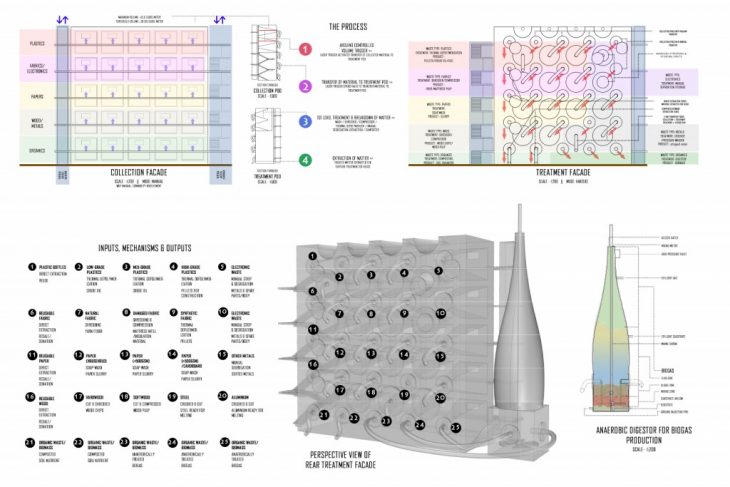
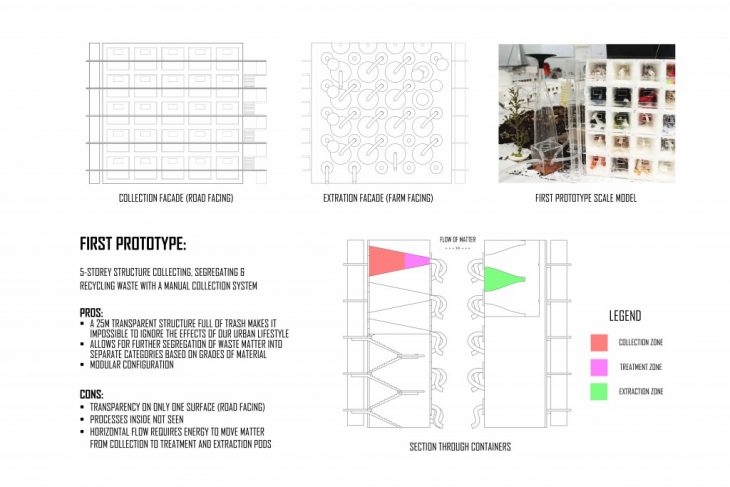
Development Criteria and Strategies:
- Improved transparency for greater impact and visual continuity to the rest of the site, emphasizing connections for inputs and outputs
- Improved modular design so the system can evolve over time, growing or reducing in structure, to meets the needs of the time
- Improved movement of matter within each waste-type container
- Smarter System: Intelligent building capable of working in an automated way to consume minimum energy and generating energy within the system from the “waste”
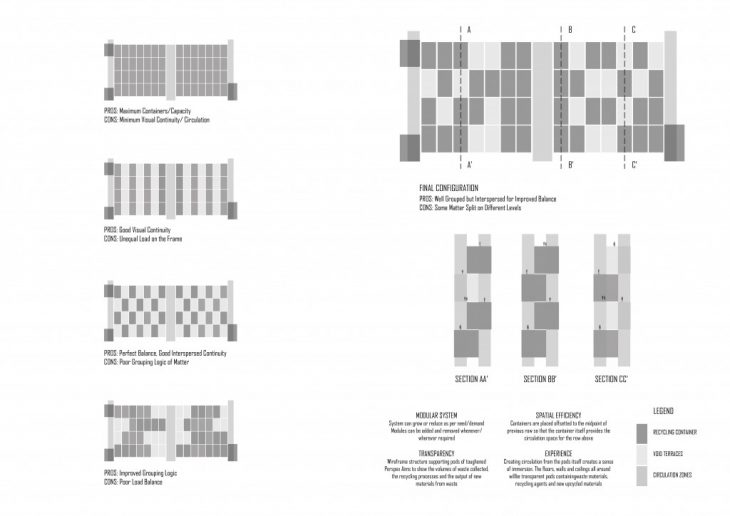
Modular System Focussed on Transparency
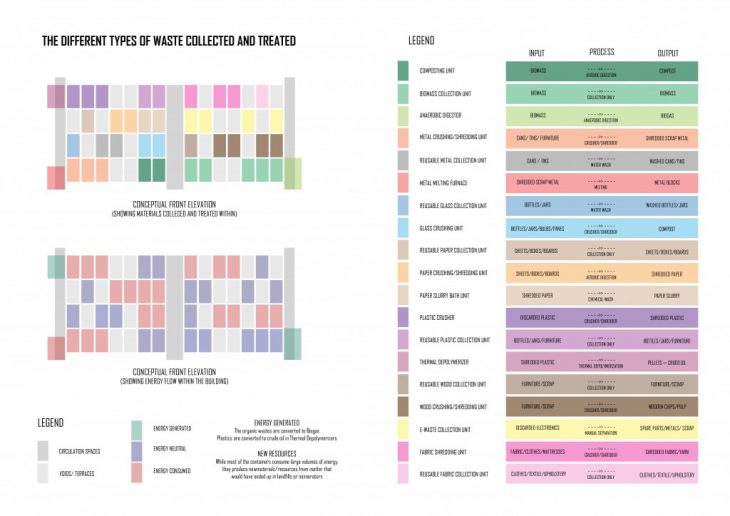
The system would consume considerable energy to carry out the primary breakdown of matter (for example, crushers/shredders embedded within the treatment containers) but it would also generate energy. An anaerobic digestor would convert the biomass collected to biogas and a thermal depolymerizer would convert grades of plastic not suitable for upcycling or recycling into pellets that would be melted producing crude oil. In addition it would also be generating a host of new materials that could be reused by the community in place of raw virgin materials.
The Final Design:
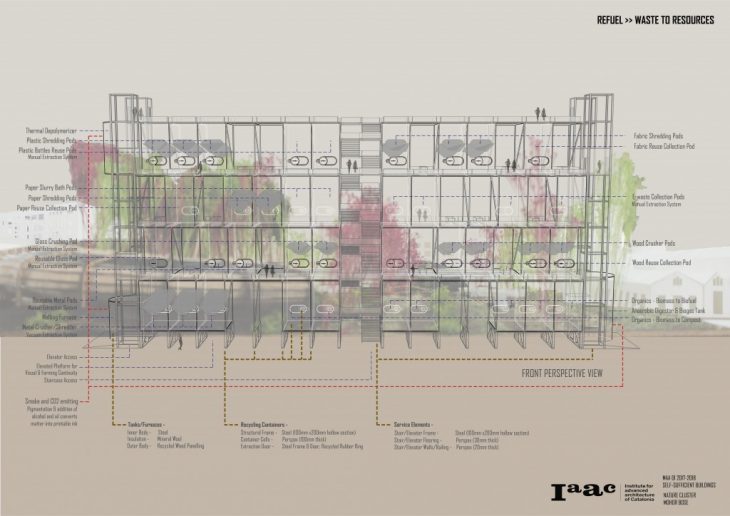
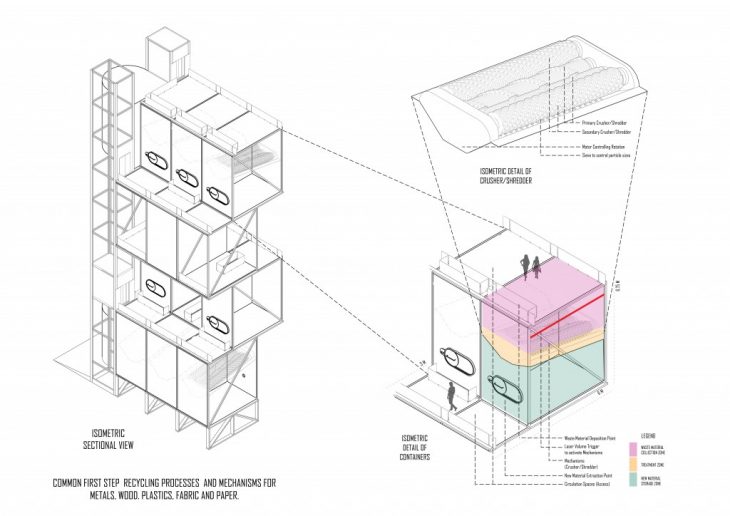
Isometric showing internal Processes and Details
Design Principals & the System:
- A central staircase and elevators at the two ends provide vertical circulation and act as grouping separators for the system. Horizontal circulation spaces are derived from offsets of the containers. So people are literally walking over, under and along these transparent containers of waste.
- Waste or trash materials are deposited into voids in the flooring that drop down into the top portion of the container below.
- Pressure sensors within the containers gauge when enough volume is collected to activate the breakdown mechanisms (in the central portion of the containers)like crusher/shredders or water/chemical washes, etc
- Once the mechanism is activated matter that is broken down/transformed drops down into the lowest part of the container, ready for extraction for reuse or further treatment, based on the nature of the matter obtained.
The Final Prototype Model:
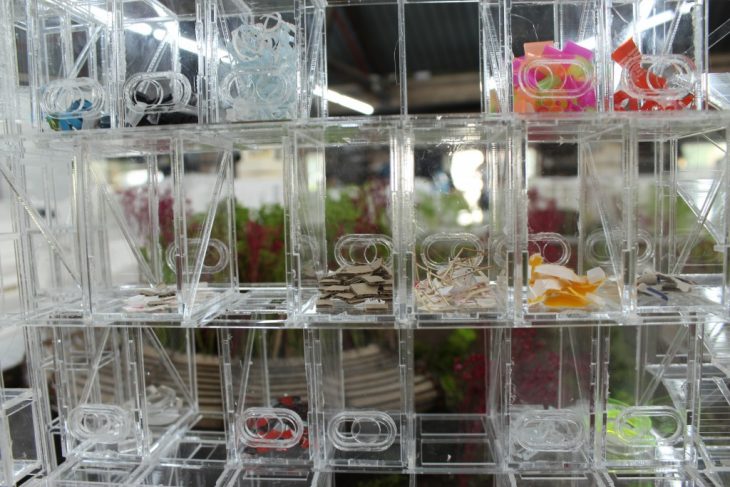
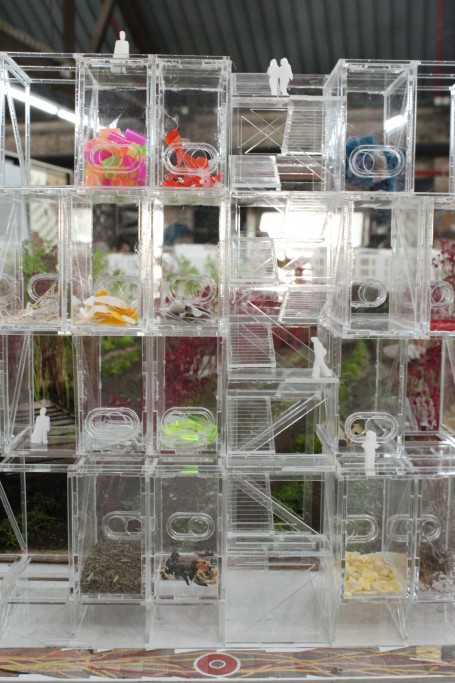
‘Refuel’ is a project of Iaac, Institute for Advanced Architecture of Catalonia, developed in the Self-Sufficient Buildings Studio of the Master of Advanced Architecture (MAA 01) program 2017-2018.
Student: Mohor Bose